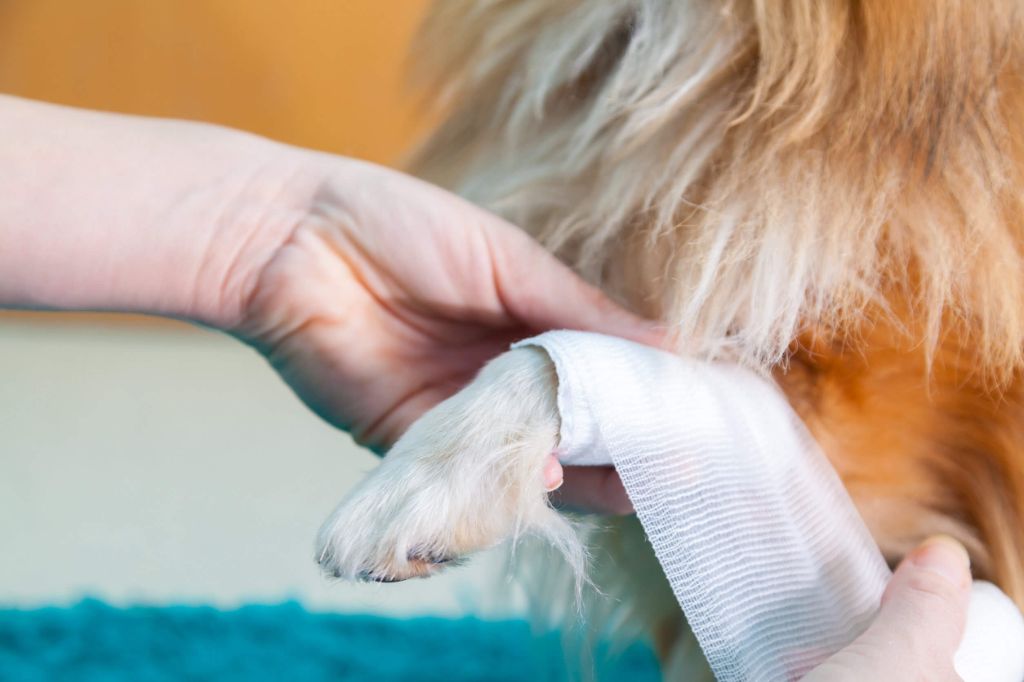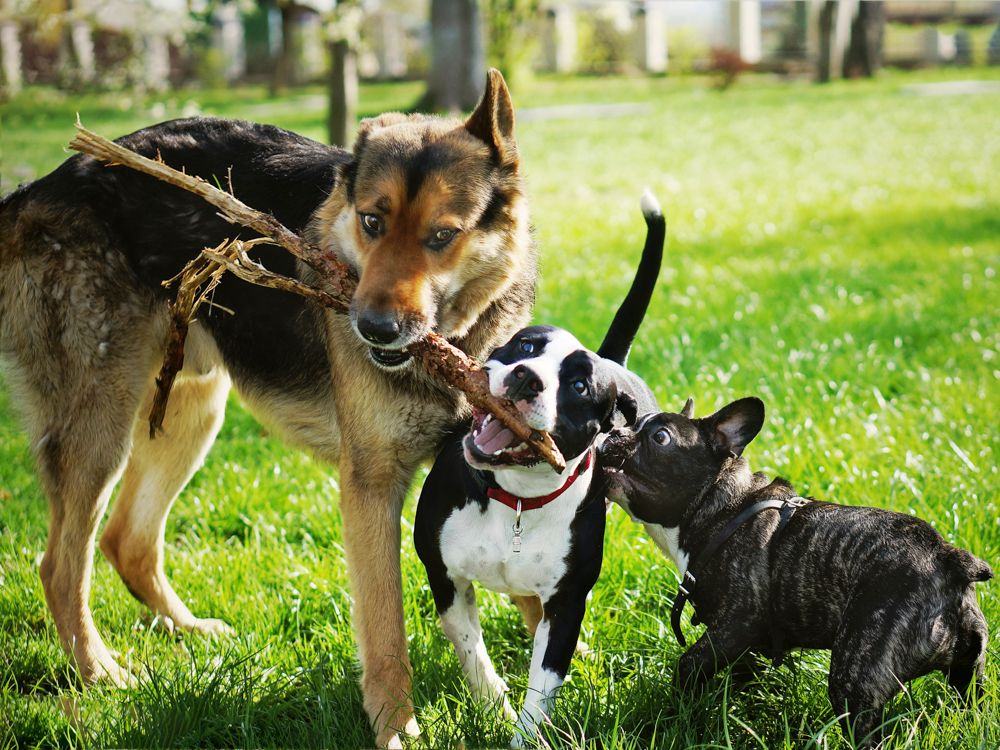Dogs Playing Too Rough with Puppies: A Concerning and Common Issue
We all love watching our dogs play and romp around together. However, play between adult dogs and puppies can sometimes get too rough. You may come across concerning situations where your adult dog gets overly enthusiastic and plays very roughly with a puppy. This can be stressful for the puppy and poses risks of injury. It’s important to understand why dogs play rough, and how to set rules to keep things safe.
Rough play between adult dogs and puppies is an extremely common issue that many pet owners will encounter. Left unchecked, it can jeopardize the puppy’s safety and undermine their training. In this article, we’ll explore the signs of overly rough play, why it happens, and provide techniques to control it. With some adjustments to supervision, training, and environment, you can ensure happy, safe play for all your dogs.
Signs of Rough Play
Rough play between dogs often involves behaviors like growling, baring teeth, wrestling, tumbling, nipping, biting, and chasing games. Growling and showing teeth during play is normal dog behavior. According to the AKC, “Some dogs growl while playing – it’s harmless and normal.” Growling is not necessarily a sign of aggression if accompanied by loose, bouncy body language [1]. Wrestling, tumbling, and chasing are active, physical forms of play for dogs. Nipping and gentle biting is also common, especially in puppies. The AKC advises that “mouthing and gentle biting during play should not be painful – it’s just a natural behavior for dogs.” However, it’s important to set rules for bite inhibition when dogs get too carried away [2]. Overall, these behaviors are typical in rough play between dogs, especially younger ones, as long as both dogs seem to be enjoying themselves and no real aggression is present.

[1] https://www.akc.org/expert-advice/training/are-they-playing-or-fighting/
[2] https://www.akc.org/expert-advice/training/are-they-playing-or-fighting/
Why Dogs Play Rough
Dogs naturally have an instinct to play rough. It’s an innate behavior passed down from their wolf ancestors who used play fighting to establish structure in the pack and practice hunting skills (Jennifer). From a young age, puppies learn about bite inhibition and social skills from wrestling with litter-mates. As dogs grow up, they continue to find excitement in rough, physical play.
However, sometimes dogs don’t know when to dial back the roughness. This is often because they lack training on appropriate play style. Owners may inadvertently encourage rough play by wrestling with puppies using their hands and feet. This teaches the dog that roughhousing with humans is acceptable (Jennifer). Always discourage mouthing and provide toys for tugging instead.
Boredom and excess energy can also cause dogs to play too exuberantly. They have pent up energy and don’t know how to expend it properly. Make sure your dog gets adequate physical and mental exercise every day through walks, training, puzzles, and games. A tired dog is a good dog.
Lastly, dogs may get overly rambunctious when they are very excited, such as when greeting someone they love or when playing at the dog park. Teach your dog to remain calm in exciting situations by rewarding polite behavior.
Risks of Rough Play
Rough play between dogs can lead to several risks, especially for the puppy involved. Puppies have smaller and more fragile bodies that are still developing, so rough play from larger or stronger dogs opens them up to potential injuries. According to The Wildest, puppies can experience injuries such as scratches, bite wounds, broken bones, dislocated joints, and concussions from rough play. These injuries, even if minor, can affect the puppy’s development.

Rough play can also lead to fear and anxiety in the puppy. If the play is too intense or aggressive for the puppy, they may become frightened of the older dog or of playing in general. This fear impacts the puppy’s social development and can lead to timid or reactive behavior down the line. Puppies who experience rough play may flinch when approached or avoid interacting with other dogs. According to Cesar’s Way, anxious puppies may even begin to nip or bite when feeling threatened.
Finally, rough play that is left unchecked can lead to the development of aggressive behaviors. The puppy may learn inappropriate play habits like constantly pouncing, nipping too hard, or not responding to cues to settle down. And if the puppy is forced to defend itself from overly intense play, it may resort to aggression. Allowing and encouraging positive, appropriate play helps minimize the chances of aggression developing in the puppy as it grows.
Setting Rules
When dogs play, it’s important to set ground rules from the start to prevent rough play. As soon as you notice over-excited or inappropriate behavior, step in immediately to redirect the dogs into more positive interactions.

Be ready to interrupt play frequently to reinforce rules. Use a happy tone to encourage gentle mouthing, wrestling, and chasing. Avoid punishing them, as this can make dogs anxious and more prone to act out.
To set rules, stand between the dogs, gently hold their collars, make eye contact, and use command words like “enough” and “settle.” Encourage them to sit and praise calm behavior. If the puppy nips, yelp loudly to signal that it hurt. This mimics what the puppy’s littermates would do.
Redirection is also key – provide appropriate outlets for their energy. Rotate short bursts of play with training exercises, puzzles, and chew toys. Food-dispensing toys are especially useful for keeping puppies engaged and focused. Take breaks to relax in crates or handlersâ€TM laps. Stay consistent, and over time dogs will learn the play style that is permitted. [1]
Managing the Environment
Managing the environment is one of the most important aspects of reducing rough play between an adult dog and puppy. According to this article, you can prevent many behavior issues by adjusting the physical environment. One key tip is to provide both dogs with their own toys and chews. Having duplicates of favorite toys can help avoid conflict and allow the puppy to play independently. It’s also important to give the puppy a safe space away from the adult dog, using baby gates, crates, or separate rooms.
As suggested in this guide, take an honest assessment of each dog’s strengths and weaknesses. Use stair gates, puppy pens, or crates to establish clear boundaries and give the puppy confinement when needed. This allows the puppy to observe the adult dog playing appropriately with toys while avoiding risky rough play interactions.
Training Techniques
Training commands like “settle” and “gentle” can help curb rough play. The “settle” command teaches the dog to calmly lie down on cue. This can interrupt roughhousing and redirect the dog’s energy into settling. The “gentle” command reminds the dog to ease up on its play style when interacting with the vulnerable puppy. Positive reinforcement through treats or praise should immediately follow obeying these commands.
It’s also important to redirect your dog’s exuberance into more constructive activities. Provide appropriate chew toys when the roughhousing starts and actively engage in a training session or game of fetch to redirect their energy. Training impulse control by asking your dog to sit, stay, or lie down before allowing access to fun activities can also help manage rough play. Always reward gentle and appropriate interactions between your dog and the puppy.
Exercising the Dog
Getting plenty of physical exercise and mental stimulation is key to curbing rough play. A dog that has pent up energy and is bored is more likely to play too exuberantly. Be sure to provide your dog with adequate daily exercise tailored to his age, breed, and energy level.

Take your dog for longer walks, jogs, or hikes to tire him out physically. Allow him to run and play freely in a fenced area. Interactive games like fetch and frisbee are great ways to burn energy. Swimming is also an invigorating and joint-friendly exercise. just 30-60 minutes of vigorous activity per day can make a dramatic difference in your dog’s behavior.
In addition to physical exercise, your dog needs mental stimulation to be happy and balanced. Spend at least 15 minutes per day training your dog using positive reinforcement techniques. Teach basic obedience cues or fun tricks. You can also provide mental stimulation through interactive dog toys such as puzzle toys, snuffle mats, and Kongs. Keeping your dog’s mind challenged and engaged prevents boredom and destructive behaviors like rough play.
Professional Help
If an older dog is playing too rough with a puppy, it’s best to seek professional help from certified dog trainers or behaviorists. They can evaluate the dogs’ interactions and provide customized training programs. Veterinarian guidance may also be needed to assess injury risks.
A certified dog trainer or animal behaviorist has extensive education and experience dealing with play aggression cases. They can identify the underlying motivation for rough play and implement effective behavior modification techniques. This includes rewards-based training, setting boundaries, managing the environment, and more. With professional guidance, owners can learn how to curb rough play and facilitate positive interactions.
Veterinarians can examine the puppy after rough play incidents. Young dogs are prone to bone and joint injuries from bigger, stronger dogs. Vets can check for signs of harm and advise on ways to prevent it going forward. They may recommend restricting play, separation, or medical treatment if the puppy seems at risk of harm. Monitoring the puppy’s health is key to ensuring rough play does not lead to lasting physical damage.
The combination of training plus medical guidance provides a comprehensive approach to curbing rough play. Owners get support to improve their dog’s behavior as well as protect the puppy’s well-being. Resolving play aggression is important to help both dogs develop properly and coexist safely.
Preventing Future Problems
To prevent excessive roughness between dogs in the future, owners can help by following key strategies for early care and supervision. According to The Honest Kitchen, proper early socialization and training is important for teaching appropriate play habits. Puppies should be introduced to other dogs and people during a prime socialization window between 3-16 weeks old.
Additionally, owners should provide close supervision of playtime to set rules and interrupt overexcited play before it gets out of hand. The ASPCA recommends always monitoring play sessions and being ready to calmly step in if the puppy seems overwhelmed. Providing adequate exercise and enrichment can also help prevent a dog from getting overly worked up during play.
Meeting a dog’s basic needs for physical activity, mental stimulation and affection will result in a calmer, more balanced dog. According to Cesar’s Way, a tired dog is a good dog, so make sure high energy breeds like labs get sufficient exercise to channel their natural exuberance.
